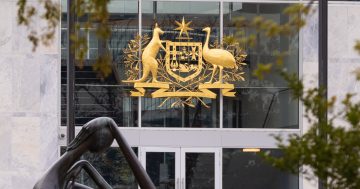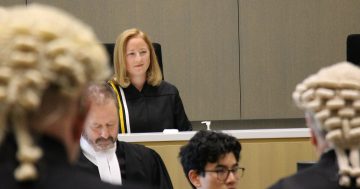
Attorney-General Shane Rattenbury said the new right to appeal would bring the ACT in line with other jurisdictions when it comes to potential miscarriages of justice or wrongful convictions. Photo: Claire Fenwicke.
A new judicial pathway will be established for potential cases of wrongful conviction, with a new right to appeal developed for cases where “fresh and compelling evidence” has been found.
The previous appeal options in the ACT had limited use, meaning once they were exhausted, there were no other chances to try to overturn a conviction.
Attorney-General Shane Rattenbury said while wrongful convictions and miscarriages of justice in the Territory were “rare”, it was important to leave this avenue of appeal open as criminal investigative technology continued to advance.
“What we need to make sure is that there’s a clear and simple process for someone – where they have fresh and compelling evidence – to be able to get back to the court, provide that new evidence, and make the case as to why their conviction should be overturned,” he said.
“We want to make sure there’s not a pathway there for people to continuously try to re-run their case and get off on a technicality, so this law is very clear: there must be fresh and compelling evidence, and it must be in the interest of justice to actually reopen the case.”
There’s no limit on using this new appeal process, but the person would need to have new evidence every time and convince the court there was a serious prospect it could overturn a conviction, rather than the appeal case being a technicality or “flight of fancy”.
“We can’t have frivolous cases. We can’t have families and victims constantly having to come back to court, but we do need a really clear mechanism where, if somebody has been wrongly convicted and there’s clear evidence that shows that, they have that avenue to come back to the court,” Mr Rattenbury said.
“The change is designed to protect a foundational principle of our justice system – that innocent people are not imprisoned.”
Fresh evidence is defined as material that was not available to the parties during the original trial. This can include new DNA evidence, new scientific understandings of the evidence, and new physical evidence whose existence was not known and could not have been known during either the trial or original appeal.
Mr Rattenbury said this brought the ACT in line with other jurisdictions.
“The new right of appeal strikes the right balance between the different interests at stake. This will not be an open slather of people trying to escape justice on technicalities,” he said.
“This new right of appeal is only available where fresh and compelling evidence has come to light, and it’s in the interests of justice for an appeal to be heard by the court.”
The new laws deliver on a government commitment in the Parliamentary and Governing Agreement for the 10th ACT Legislative Assembly to consider amendments to the Supreme Court Act 1933 to introduce best practice right to appeal laws.





















